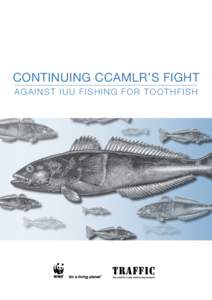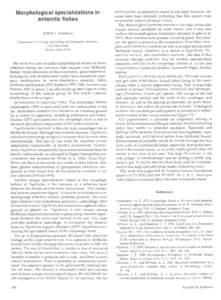<--- Back to Details
| First Page | Document Content | |
|---|---|---|
 Date: 2014-07-27 16:31:57Auditory system Otolith Paleontology Patagonian toothfish Dissostichus Annulus Identification of aging in fish Fish Fish anatomy Nototheniidae |
Add to Reading List |
 | PDF DocumentDocID: 17hVw - View Document |
 | C Toothfish 08 - final quark file paper version.qxpDocID: 15Son - View Document |
 | Patagonian and Antarctic Toothfish Dissostichus eleginoides and D. mawsonii PropAustralia) List Patagonian toothfish (Dissostichus elegenoides) and Antarctic toothfish (Dissostichus mawsonii) in Appendix II. AnnDocID: 149vL - View Document |
 | most other aspects of the life history. On the basis of buoyancy measurements, McMurdo Sound notothenioids were grouped into the four adaptive or ecological types mentioned above. Publications now in preparation will docDocID: 147lq - View Document |
 | Morphological specializations in antarctic fishes JOSEPH T. EASTMAN Department of Zoology and College of Osteopathic Medicine Ohio UniversityDocID: 13Lum - View Document |
 APPENDIX H REPORT OF THE WORKSHOP ON ESTIMATING AGE IN PATAGONIAN TOOTHFISH (Center for Quantitative Fisheries Ecology, Old Dominion University, Norfolk, Va., USA, 23 to 27 July 2001)
APPENDIX H REPORT OF THE WORKSHOP ON ESTIMATING AGE IN PATAGONIAN TOOTHFISH (Center for Quantitative Fisheries Ecology, Old Dominion University, Norfolk, Va., USA, 23 to 27 July 2001)